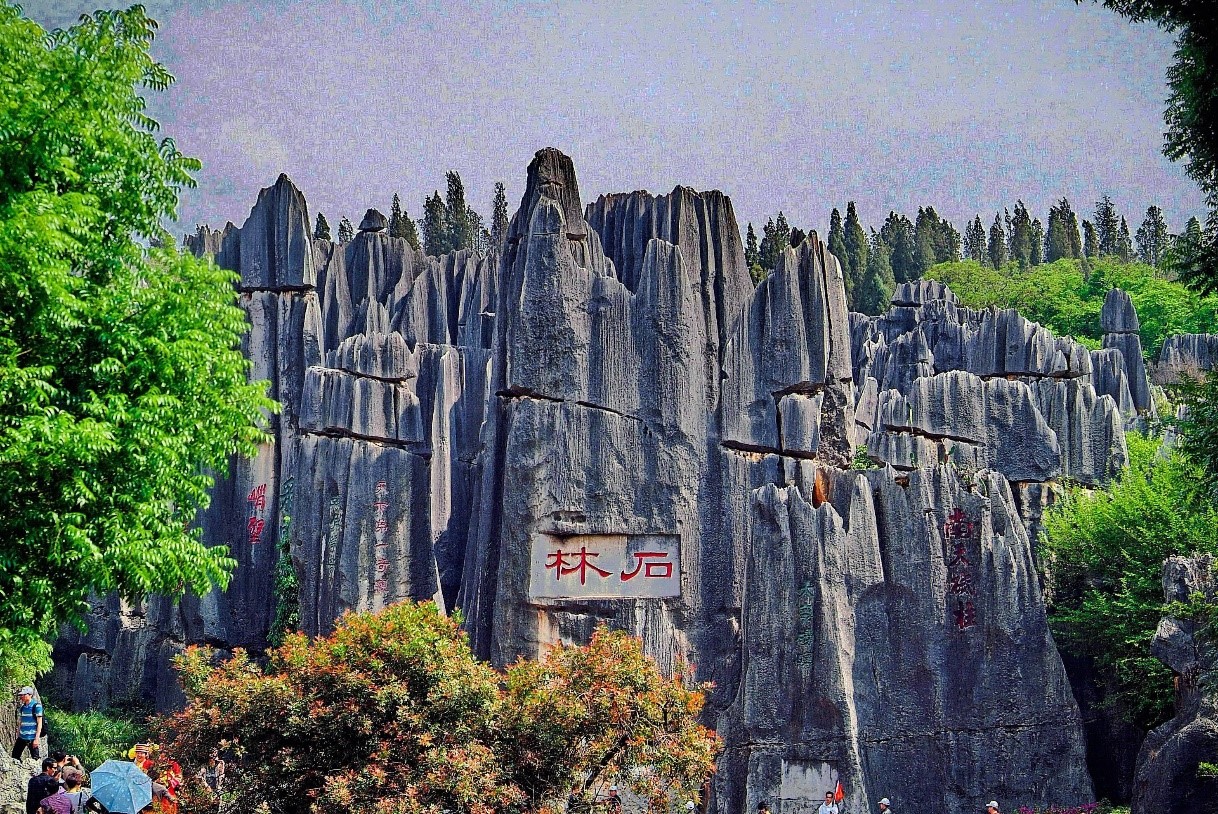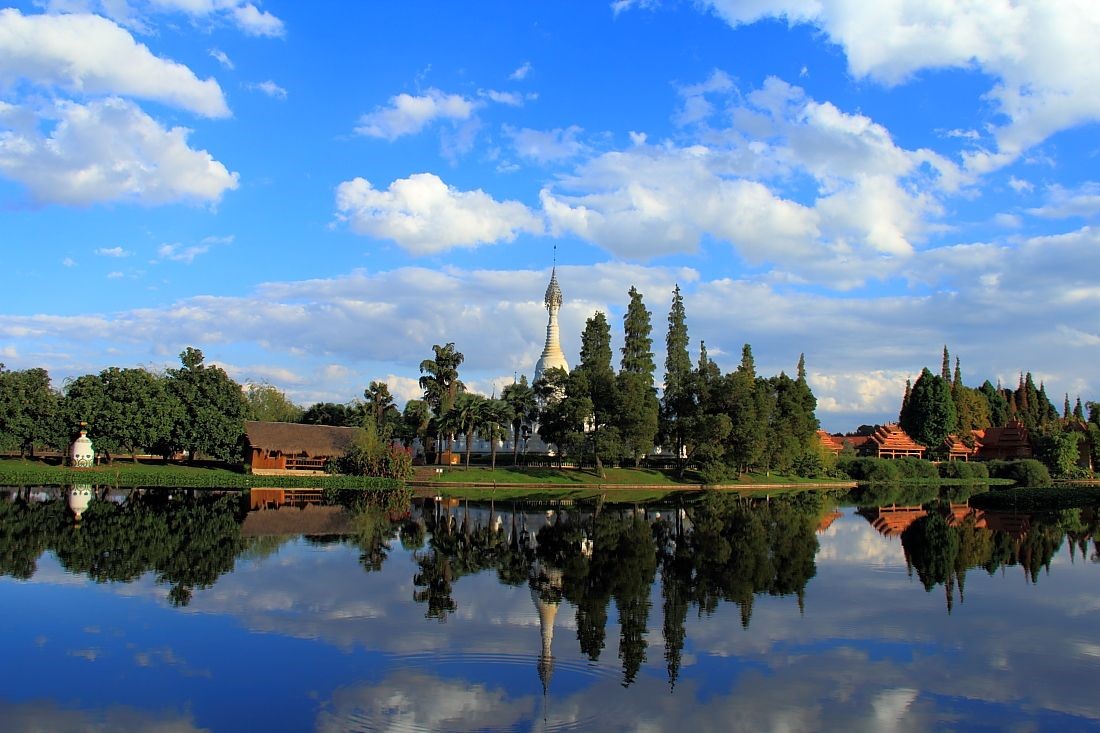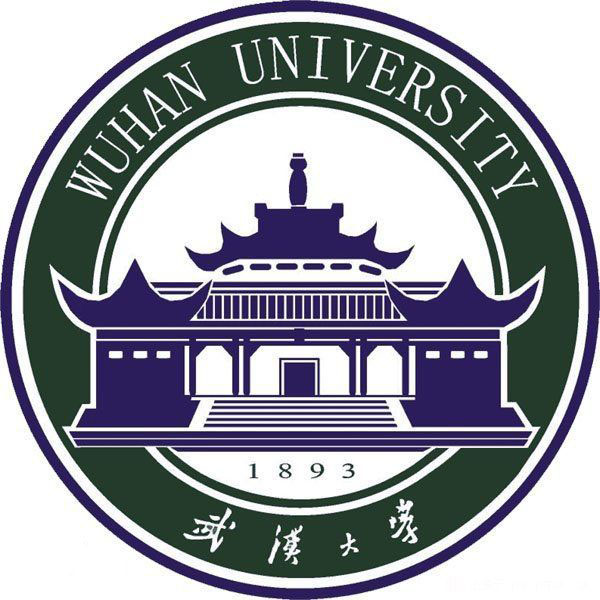
Kunming is the capital of and largest city in Yunnan Province, Southwest China. Known as Yunnan-Fu until the 1920s, today it is a prefecture-level city and the political, economic, communications and cultural centre of the province as well as the seat of the provincial government. Kunming is also called the Spring city due to its weather. The headquarters of many of Yunnan's large businesses are in Kunming. It was important during World War II as a Chinese military center, American air base, and transport terminus for the Burma Road. Located in the middle of the Yunnan–Guizhou Plateau, Kunming is located at an altitude of 1,900 metres (6,234 feet) above sea level and at a latitude just north of the Tropic of Cancer. Kunming has as of 2014 a population of 6,626,000 with an urban population of 4,575,000,[4] and is located at the northern edge of the large Lake Dian, surrounded by temples and lake-and-limestone hill landscapes.
Kunming consists of an old, previously walled city, a modern commercial district, residential and university areas. The city has an astronomical observatory, and its institutions of higher learning include Yunnan University, Yunnan Normal University and a medical college. On the outskirts is a famed bronze temple, dating from the Ming dynasty.
Its economic importance derives from its geographical position. Positioned near the border with Southeastern Asian countries, serving as a transportation hub in Southwest China, linking by rail to Vietnam and by road to Burma and Laos. This positioning also makes it an important trade center in this region of the nation. It also houses some manufacturing, chiefly copper, though some other chemicals, machinery, textiles, paper and cement take key. Though having a nearly 2,400 year history, its modern prosperity dates only from 1910, when the railway from Hanoi was built. The city has continued to develop rapidly under China's modernization efforts. Kunming's streets have widened while office buildings and housing projects develop at a fast pace. Kunming has been designated a special tourism center and as such sports a proliferation of high-rises and luxury hotels.
Kunming will be the hub and terminus for the "Pan Asia High Speed Network" using high speed trains to connect China, Cambodia, Laos, Myanmar, Thailand, Malaysia and Singapore.
Because of the establishment of National Southwestern Associated University, Kunming was usually regarded as the bulwark of modern China democracy during The Second Sino-Japanese War.
Kunming is embraced on three sides by green hills with the Dian Lake in the south, the largest plateau lake in Yunnan Province as well as the six largest freshwater lake in China flanked with beautiful scenery. Due to its low latitude, Kunming boasts moderate and steady climate in the four seasons like spring. And specifically, the Dian Lake, the plateau lake regulates the temperature and humidity there, leading to a livable environment with clear air, high sky, pale clouds, and blooming.
All these advantages have translated Kunming into the top ten hot tourist city in China, and the first national excellent tourist cities. By the end of 2012, the number of cultural relics at the multi-level governments has reached more than 200 including She Lin Geopark, the Dian Lake, Anning Hot Spring and so on. It has formed a national tourist route with Kunming at center driving the all province and linking the Southeast-Asia. And it has shaped a tourist system integrating tourism, sightseeing, resort and entertainment into one.
She Lin Geopark
86 kilometers far from Kunming City, She Lin Geopark, in the Lunan County, is consisted of seven scenic spots like Large Stone Forest, Small Stone Forest, Naigu Stone Forest, Dadie Waterfall, Chang Lake, Yue Lake, Zhiyun Cave and Qifeng Cave. It is a scenic spot enjoying high reputation both at home and abroad of 4000 square kilometers, which is praised as “the best in world wonders”.

Jiuxiang Cave
Jiuxiang Cave is a national-level scenic spot situated in Yiliang County, Kunming City. It is said that the origin of this place may have various versions. It is an emerging tourist attraction with cave as its major part combining natural landscape, cultural landscape, and folk customs outside the cave.

The Dian Lake
Located in the foot of Xishan Mountain, southern Kunming, the Dian lake is adjacent to Kunming Grand View Park in the north extending to Jinning County in the south. It has, historically, been a holiday paradise. Shaped like a crescent, the Dian Lake is stretching from the north to south for 39 km, and 13.5 km in width with the average width being about 8 km. With 200-km lake shoreline, it ranks first in terms of its area of 300 square kilometers.

Daguan Pavilion
Six kilometers from the downtown area, Daguan Pavilion is in the west of Kunming City built in the Kangxi Dynasty. Facing the Dian Lake and overlooking the Xishan Mountain, Daguan Pavilion enjoys a landscape of lakes and mountains. That is the origin of its name, Daguan Paviliion, meaning grand view park in Chinese. Its major building, the 3-store Daguan Pavilion is built by the water with the most powerful visual impact. There are a lot of couplets hanging on the columns, among these, a long couplet containing 180 Chinese characters was written by Sun Ranweng, a renowned poet in the Qing Dynasty, which is considered as the longest couplet from ancient times to present hanging on the two sides of the columns by the water.

 |
 |
 |